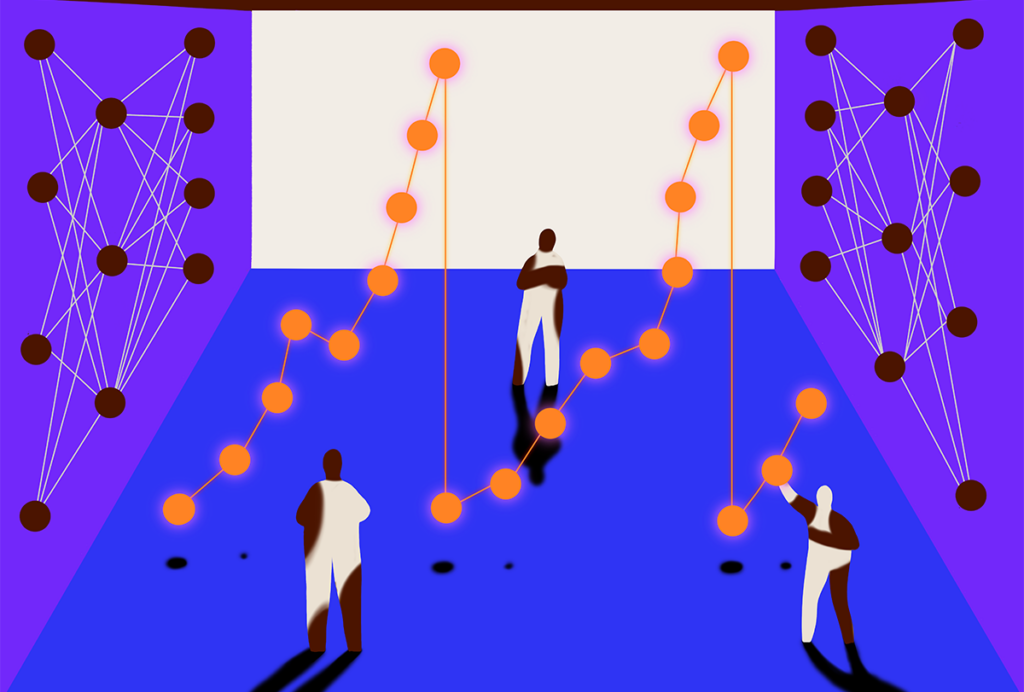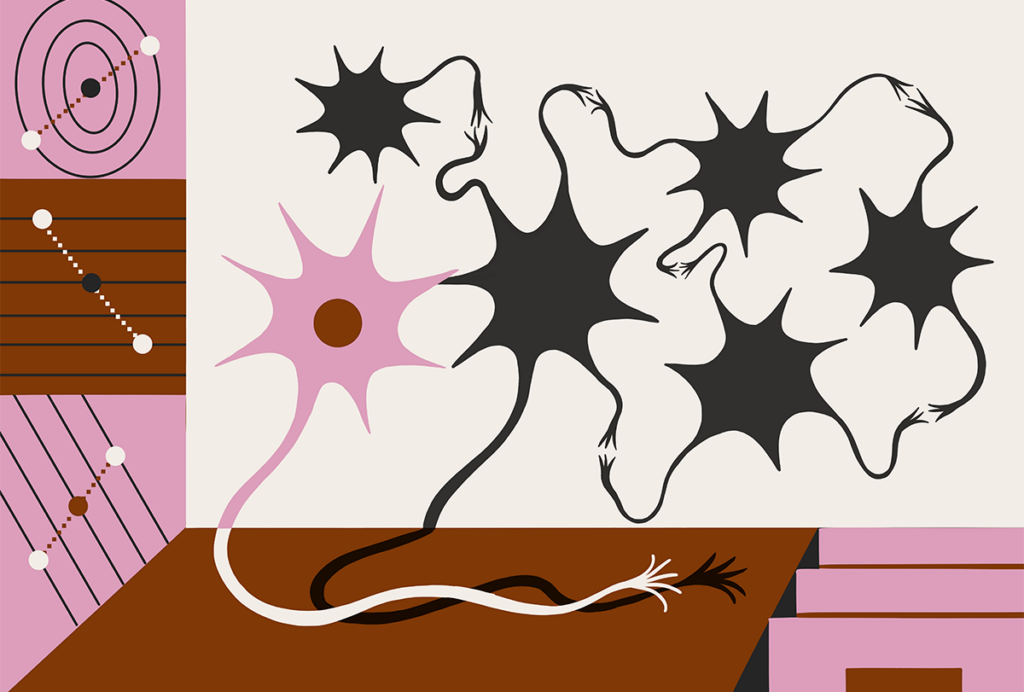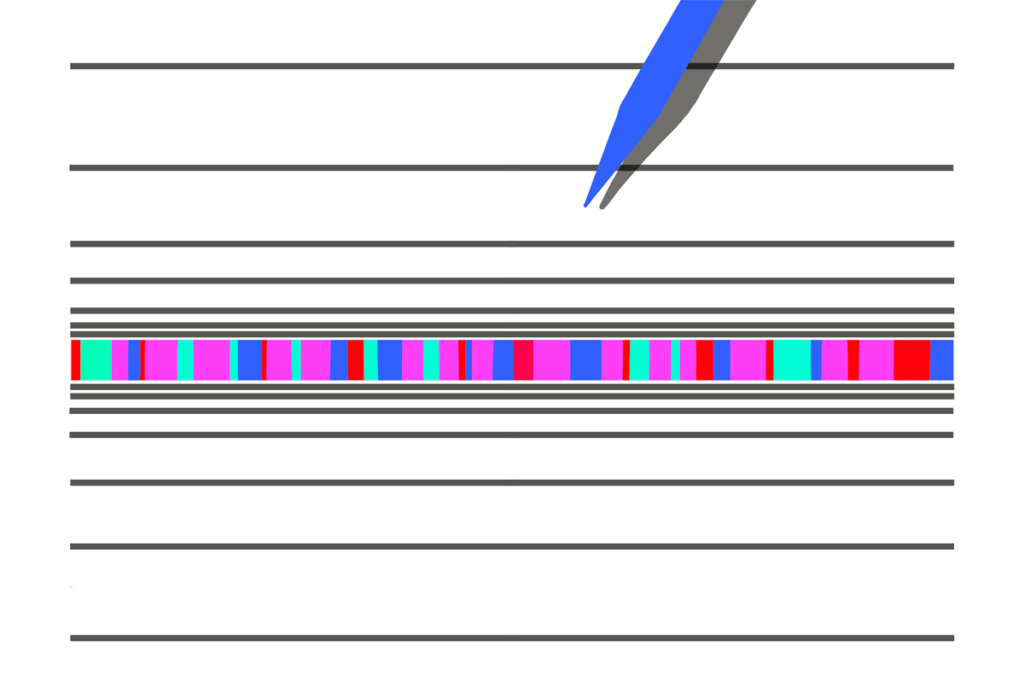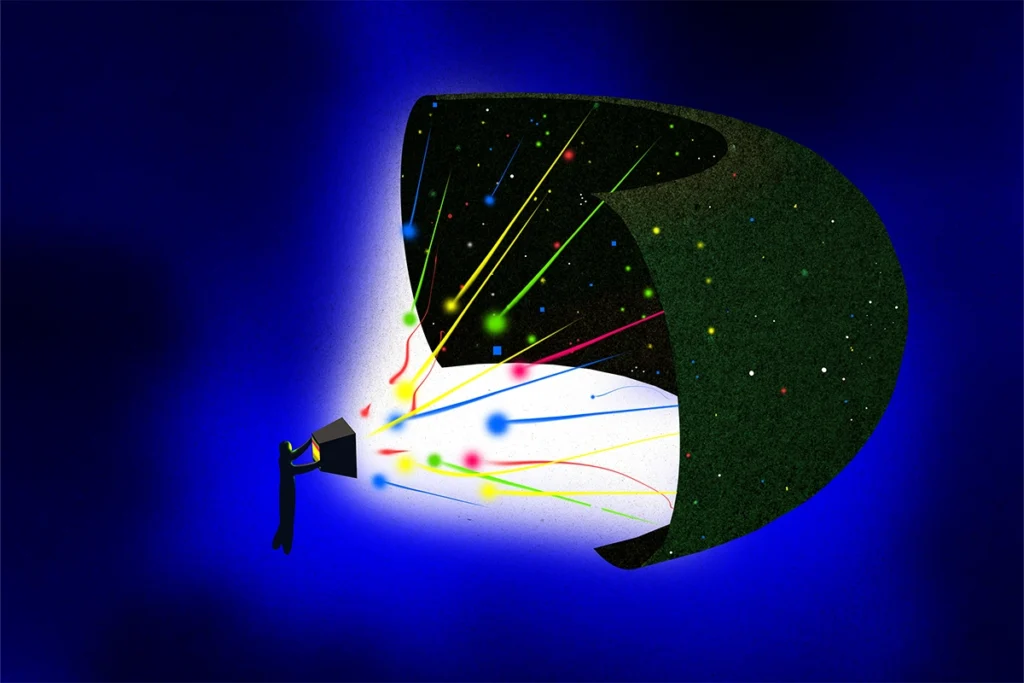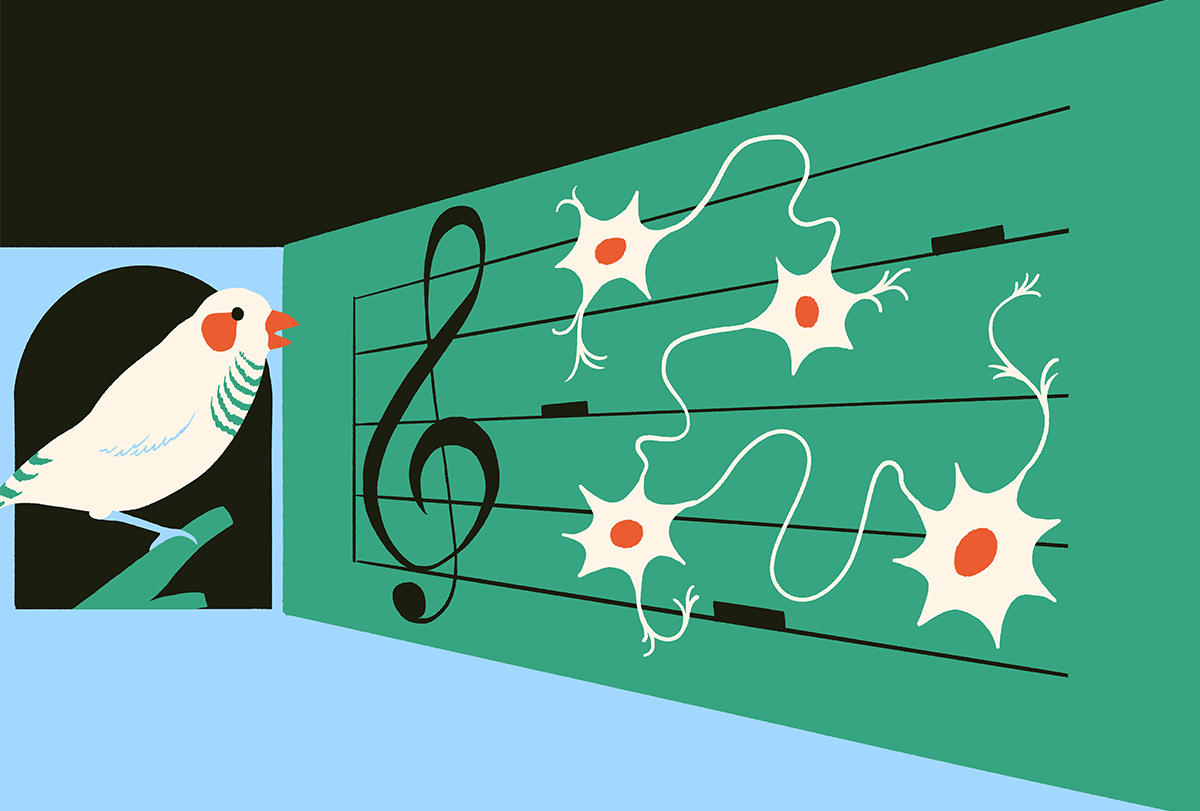
This paper changed my life: Abigail Person on birdsong, feed-forward circuits and convergent computations
By isolating specific neuron types involved in zebra finch birdsong, this 2002 Nature paper from Michael Fee and colleagues revealed elegant neural mechanisms controlling the timing of natural learned behavior.
Answers have been edited for length and clarity.
What paper changed your life?
An ultra-sparse code underlies the generation of neural sequences in a songbird. Hahnloser RHR, Kozhevnikov AA, Fee MS. Nature (2002)
This paper was the first to describe a sparse, behaviorally locked population code for a specific set of projection neurons in the song control system of adult zebra finches. The authors used antidromic stimulation—a common way to trace neuronal circuits via back-propagating action potentials—to identify neurons that project from the high vocal center nucleus (HVC) to the forebrain robust nucleus of the archistriatum (RA), both essential regions for song production.
The researchers recorded activity while the zebra finches sang sets of notes known as song motifs, and found that each RA-projecting HVC neuron emitted a single, brief (<10-ms), high-frequency (>500-Hz) burst of action potentials at a specific point during a motif. Each neuron they recorded was active at a different time, suggesting that the population of RA-projecting HVC neurons uniquely tiled the temporal progression of the song motif. Through additional experiments, they argued for a model in which this temporal basis set gave rise to the more complex motor commands in nucleus RA during singing. These findings brought to light neural mechanisms of behavioral sequence generation with stunning resolution and satisfying intuitive appeal.
When did you first encounter this paper?
This study came out during my second year of Ph.D. training. Because the sparse code was such an amazing result, the whole songbird community at the University of Washington read and discussed the paper extensively. I remember being struck by the beauty of those bursts of action potentials. Back then, I was in the habit of drawing out the song system, sketching out patterns of activity at each nucleus, so I added these incredibly structured signals to our working models.
Why is this paper meaningful to you?
This paper resonated so strongly with me because it presented an elegant observation that made so much sense. The results solved several computational conundrums in bird song behavior and opened up mechanistic terrain that was otherwise opaque. The resolution of this beautiful code was awe-inspiring.
How did this research change how you think about neuroscience or challenge your previous assumptions?
Among the lore about the discovery of these neurons is that people had been recording from the HVC for years and never found these cells. Now, I think about the possibility that we are overlooking some fundamental feature of a network as we record increasingly large populations of neurons. What elegant signals are lurking in there? Are we asking the right questions for our measurements? Are we subjecting our recordings to the right analyses? The elegant, intuitive population codes described in this study challenge views in many domains of neuroscience that treat neural codes as inherently noisy and low-dimensional.
How did this research influence your career path?
Several years after this work was published, I was completing my Ph.D. in David Perkel’s lab and considering postdoctoral fellowships. This paper, among others, convinced me that in vivo recording during naturalistic behavior was the way to go. It probably seems obvious now, but this was just before the advent of optogenetics transformed neuroscience to center around systems. I knew I wanted to do in vivo work using the MicroDrive tool used in this paper. But at the time, the National Institutes of Health had decided to deprioritize birdsong work, which signaled that staying in that field would be rough. Luckily, Minmin Luo in Larry Katz’s lab at Duke had adapted the MicroDrive for use in mice. Sadly, Larry Katz had just died, but Minmin was just starting his lab in Beijing, so I decided to move there to apply the technology to study mouse mating behavior.
After a year in Minmin’s lab, I came back to the United States to join Indira Raman’s lab at Northwestern University and shifted my focus to work on the cerebellum. Although I left the songbird field, this paper never left me. Like the song control system, the cerebellum is also a largely feed-forward circuit involved in motor learning and control. Moreover, the cerebellar granule cell layer is hypothesized to generate a temporal basis set, not so different from the code in the HVC. Time will tell whether a time code similar to the HVC’s exists in the cerebellar granule layer, but the ideas of this paper remain deeply influential to my way of thinking.
Is there an underappreciated aspect of this paper you think other neuroscientists should know about?
This paper opened the door to studying feed-forward circuits that begin with a sparse temporal basis. A handful of other feed-forward neural circuits in animal brains are organized similarly to the songbird song system, including the hippocampus as well as the cerebellum. Each begin with a sparse coding layer feeding into associative layers, which is followed by population pooling and output. This coding motif is seen across these highly distinctive circuits, which are not evolutionarily related. Such convergent neural solutions point to the power of feed-forward circuits to compute and learn quickly. The song system, with its reservoirs of sparse codes, serves as an inspirational example of a neurophysiological mechanism by which all of us can continue to be amazed.
Recommended reading
